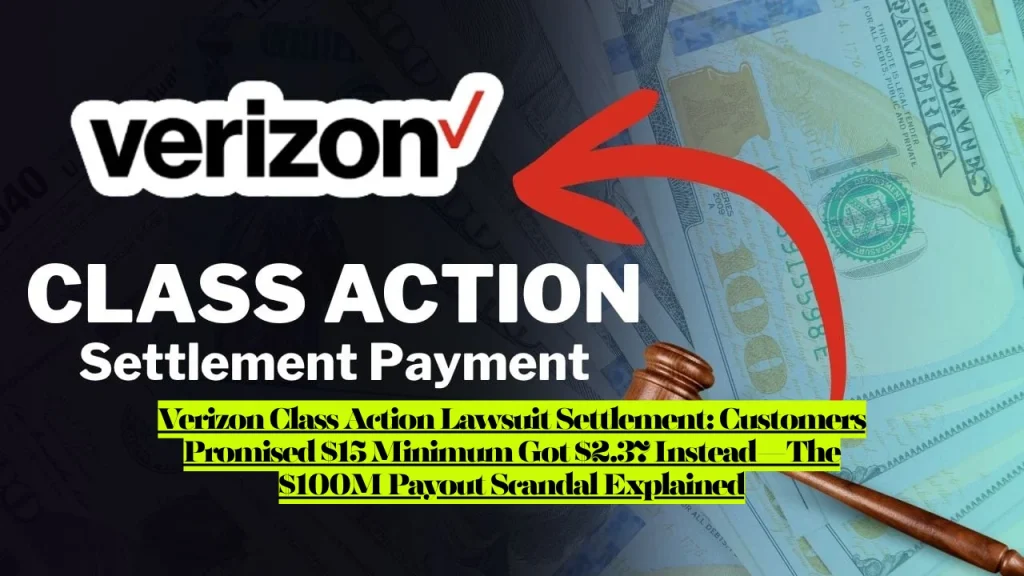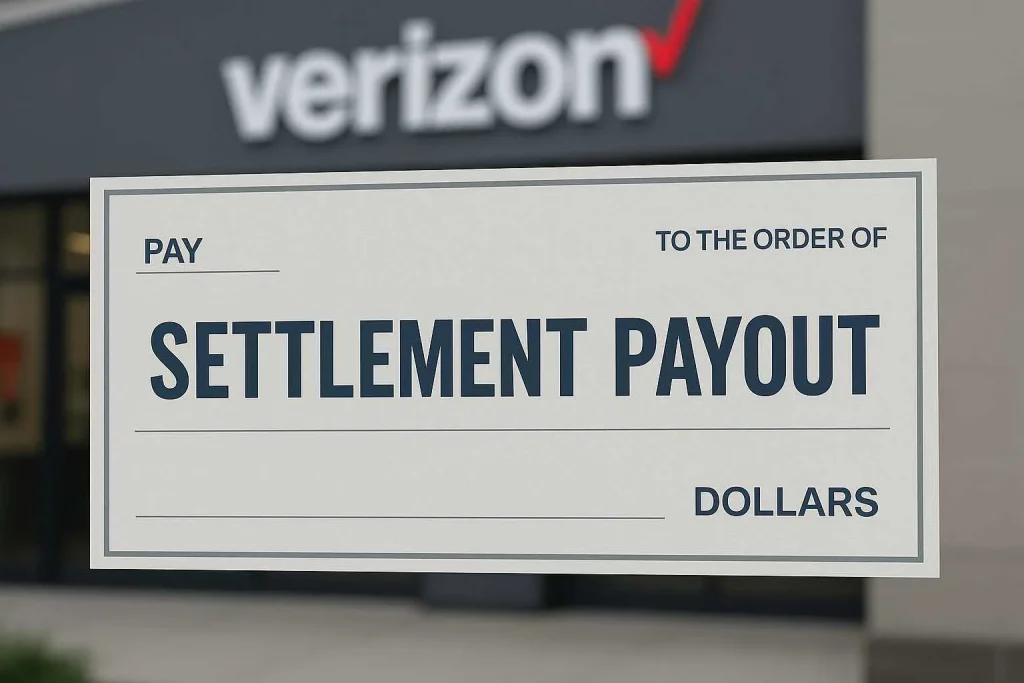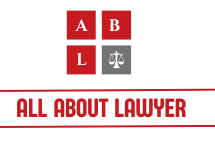Verizon Class Action Lawsuit Settlement, Customers Promised $15 Minimum Got $2.37 Instead, The $100M Payout Scandal Explained
The Verizon class action lawsuit settlement that promised customers between $15 and $100 in compensation is now generating outrage after payments started hitting bank accounts in January 2025—with many recipients receiving as little as $2.37 instead of the stipulated minimum. The $100 million settlement was supposed to compensate millions of Verizon customers who were secretly charged undisclosed administrative fees between 2016 and 2023, but the actual payouts have left customers feeling scammed all over again.
The Promise vs. The Reality: What Went Wrong?
When Verizon settled the class action lawsuit in 2024, the agreement clearly stated that each legitimate claimant was entitled to $15 per account, plus an additional $1 for each month they received postpaid wireless or data services and were charged an administrative fee, with payouts capped at $100.
What customers expected:
- Minimum base payment: $15 per account
- Monthly bonus: $1 per month of service
- Maximum payout: $100 per person
- Clear, fair compensation for hidden fees
What customers actually got:
- Payments as low as $2.37
- Amounts well below the promised $15 minimum
- No clear explanation from Verizon
- Social media erupting with angry complaints
On social media sites including X, Verizon subscribers groused about measly sums they say the wireless provider had paid them. One customer posted a screenshot showing he’d been sent a prepaid Mastercard worth $2.37 as his Verizon Administrative settlement payment.
The Hidden Catch: Pro Rata Reduction Nobody Saw Coming
Buried in the settlement agreement was a clause that essentially allowed Verizon to pay less than promised if too many people filed claims.
The settlement agreement specifically described why payments could be less if there’s more claims: “In the event the aggregate Settlement Payments across all Valid Claimant accounts exceed the Net Distributable Funds, the Settlement Payment issued to each Valid Claimant account will be reduced on a pro rata basis, as determined by the Settlement Administrator.”
Translation: If the $100 million fund ran out, everyone’s payment would be reduced proportionally—including below the supposed $15 “minimum.”
Why this is legally questionable:
The word “minimum” typically means the lowest possible amount. If a pro rata reduction can drop payments below $15, then $15 isn’t actually a minimum—it’s just a theoretical starting point.
Many customers feel this bait-and-switch tactic is as deceptive as the original hidden fees they were supposedly being compensated for.
Related Lawsuit: Jayda Cheaves Lawsuit, Influencer Wins Millions After Walgreens Employee Exposed Her Private Medical Records—The HIPAA Violation That Changed Everything

The Original Sin: What Verizon Actually Did
Before we dive deeper into the payout disaster, let’s understand what Verizon did to trigger this lawsuit in the first place.
The class-action lawsuit alleged that Verizon added “Administrative Charges” and “Telco Recovery Charges” to postpaid wireless bills without properly disclosing them to customers. Plaintiffs argued that these extra fees, typically a few dollars each month, were not part of the advertised plan prices and therefore misled customers.
The deceptive practice:
- Verizon advertises plan at $70/month
- Customer signs up expecting $70/month
- Bill arrives at $73-75/month
- Extra charges buried in fine print as “administrative fees”
- Multiply by millions of customers over 8 years
- Verizon collects hundreds of millions in undisclosed fees
The fees were applied to millions of accounts nationwide between January 1, 2016, and November 8, 2023.
Verizon denied wrongdoing but agreed to a $100 million settlement to resolve the dispute and avoid further litigation costs. Classic corporate playbook: don’t admit guilt, but pay to make it go away.
The Math That Doesn’t Add Up
Let’s break down why the settlement payments make no sense.
Official settlement terms:
- $100 million total fund
- $15 minimum base payment per person
- $1 per month of service with fees
- Claims deadline: April 15, 2024
Estimated class size: If Verizon had millions of postpaid customers during 2016-2023, and even half filed claims, we’re talking about 1-2 million claimants at minimum.
The calculation problem:
- 1 million claimants × $15 minimum = $15 million just for base payments
- Average customer probably had 24+ months of service = another $24 million minimum
- Total needed just for minimums: $39+ million
- $100 million fund should easily cover this
So why are people getting $2.37?
What Verizon Isn’t Telling You
Verizon did not immediately respond to CBS MoneyWatch’s inquiry about why some users’ payouts totaled less than $15.
This silence is deafening. If there’s a legitimate legal reason why payments dropped below the promised minimum, Verizon should explain it. Their refusal suggests they know it looks bad.
Possible explanations nobody’s confirming:
Too many claims: If 5+ million people filed claims, the fund could be depleted. But shouldn’t Verizon have anticipated this?
Invalid claims: Maybe many “legitimate claimants” were deemed invalid after review. But then why send them money at all?
Administrative costs: Perhaps settlement administrator fees and attorney costs ate up more of the fund than expected.
Bad faith calculation: The darkest theory—Verizon and the settlement administrator are deliberately underpaying customers betting they won’t fight over small amounts.
The Social Media Explosion
When the first payments hit accounts in January 2025, social media erupted with outrage.
Typical complaints on X (Twitter):
“Got $4.18 from the Verizon settlement. I was promised $15 MINIMUM. This is a scam.”
“My Verizon settlement payment: $6.73. The lawyers probably got millions. We get pocket change.”
“Verizon owes me money for hidden fees, so they settle by… hiding the actual settlement amount? This is insane.”
“I’ve been a Verizon customer for 10 years and got $2.37. At this rate, I’d make more money picking up pennies off the sidewalk.”
Most on social media said they got anywhere from $4 to $14 total deposited to their Venmo or PayPal accounts—all below the promised $15 minimum.
Where The Money Really Went: Attorney Fees
While customers received pocket change, the attorneys who filed the lawsuit made out significantly better.
Standard class action attorney fees:
- Typically 25-35% of the settlement fund
- In this case: $25-35 million to lawyers
- Plus reimbursement of litigation costs
- Named plaintiffs often receive $5,000-10,000 bonuses
The math:
- $100 million total fund
- Minus $30 million attorney fees (estimate)
- Minus $5-10 million administrative costs
- Minus plaintiff incentive payments
- Leaves ~$60-65 million for actual victims
If 5-10 million customers filed valid claims, that’s only $6-13 per person. Now the low payouts start making sense—but the promised “$15 minimum” becomes an obvious lie.
What Legal Experts Are Saying
Consumer protection attorneys are divided on whether the low payouts violate the settlement terms.
“The settlement clearly states a minimum of $15,” says one consumer rights advocate. “If that minimum can be reduced ‘pro rata,’ then it’s not actually a minimum—it’s false advertising in the settlement itself.”
Others argue the legal language protected Verizon: “The pro rata reduction clause is standard in class action settlements. If there aren’t enough funds to pay everyone the stated amount, courts allow proportional reductions.”
The uncomfortable question: If Verizon knew the fund wouldn’t cover promised payouts, why did they agree to those terms? Were they counting on customers not reading the fine print—again?
Comparing This To Other Telecom Settlements
The Verizon settlement stands as one of the largest telecom class-action resolutions of its kind, but it’s not the only one.
Recent similar cases:
- AT&T data breach settlement: $177 million, $7,500 per person claimed (actual payouts TBD)
- T-Mobile data breach: $350 million, $25-100 per person
- Sprint billing practices: $28 million, $15-40 per person
What makes Verizon different:
The Verizon case is notable for the massive gap between promised and actual payouts. Most settlements either:
- Don’t promise specific minimums, or
- Properly fund the minimums they promise
Verizon’s settlement did neither, creating a PR disaster.
Can Customers Challenge The Settlement?
Once a class action settlement receives final approval, options for individual class members are extremely limited.
Final approval for this class action settlement was granted April 26, 2024. An appeal was filed May 4, 2024. Claims will not be paid until appeals are resolved.
Those appeals have since been withdrawn, and the settlement is now final. This means:
No individual lawsuits: By being part of the class, you’ve released Verizon from all related claims.
No challenging payout amounts: The settlement administrator determines amounts, and their decisions are typically final.
No “second bites”: You can’t reject your payout and sue separately.
Your only options:
- Accept the payment (however small)
- Complain on social media (which changes nothing legally)
- Learn to read settlement agreements more carefully next time
The Opt-Out Option Nobody Took
The settlement allowed class members to opt out and preserve their right to sue individually. Almost nobody did.
Why people don’t opt out:
Unawareness: Most people never read class action notices. They’re written in dense legalese and look like junk mail.
Individual case weakness: Suing Verizon alone over $50 in hidden fees isn’t economically viable. Attorney costs would exceed any recovery.
Settlement sounded good: “$15-100” seemed fair for minimal effort. Nobody expected it would actually be $2-6.
The catch-22: The only people who benefit from opting out are those wealthy enough to afford their own attorneys. Everyone else is stuck with whatever the class settlement offers.
What This Means For Future Class Actions
The Verizon settlement debacle could have far-reaching implications.
For companies: This settlement shows you can advertise generous-sounding terms, bury reduction clauses in fine print, and pay pennies on the dollar with minimal consequences.
For customers: Class actions increasingly look like scams benefiting lawyers while providing token payouts to victims. This breeds cynicism about the entire system.
For courts: Judges who approved this settlement should reconsider whether “minimum” payouts subject to unlimited reduction actually protect class members.
For attorneys: Plaintiffs’ lawyers made $25-35 million. Customers got $2-14. These optics damage the credibility of class action litigation as a consumer protection tool.

The Regulatory Failure
The Federal Communications Commission (FCC) and Federal Trade Commission (FTC) are increasingly scrutinizing hidden fees, often labeled as “junk fees.”
But regulatory action comes too late for Verizon customers who paid these fees for 8 years.
What regulators should do:
- Require clear, upfront disclosure of all fees in advertised prices
- Ban “administrative fees” that aren’t actual costs
- Impose fines that hurt companies more than settlement payouts
- Create restitution funds that actually compensate victims fully
What they actually do:
- Issue statements expressing concern
- Hold hearings
- Propose rules that get watered down
- Allow companies to settle without admission of wrongdoing
As more settlements emerge, consumers may see stronger protections and clearer pricing structures in the coming years. Or they may see more of the same—companies hiding fees, getting caught, paying settlements that benefit lawyers, and repeating the cycle.
Your Verizon Settlement Questions Answered
If you were eligible but didn’t file a claim, you won’t receive any payment. The deadline was April 15, 2024.
If you did file a claim and haven’t received payment yet, check with the settlement administrator at [email protected] or call 844-689-0186.
Tracking your payment:
Payments went out via multiple methods:
- Zelle transfers
- Direct deposits (PayPal/Venmo)
- Prepaid Mastercards (mailed)
- Paper checks (mailed)
Payment method was selected when you filed your claim. If you can’t remember, contact the settlement administrator.
The Bigger Picture: Hidden Fees Everywhere
The Verizon case highlights a broader issue: hidden fees have become standard practice across industries.
Where else you’re being nickeled and dimed:
- Airlines (baggage fees, seat selection, “convenience” charges)
- Hotels (resort fees, parking, early check-in/late checkout)
- Tickets (Ticketmaster’s “service” and “facility” fees)
- Banking (overdraft, maintenance, ATM fees)
- Utilities (delivery charges, regulatory cost recovery)
The pattern is always the same:
- Advertise a price that sounds competitive
- Add mandatory fees that aren’t included in advertised price
- Customer discovers real cost only at checkout/billing
- Company profits from deceptive pricing
- Occasionally get sued and pay pennies on the dollar in settlement
- Repeat
Until regulators require “all-in” pricing where advertised costs include all mandatory fees, this cycle continues.
What You Can Do Right Now
Check if you got paid:
Review your Venmo, PayPal, Zelle, or bank account for deposits from “Verizon Administrative Settlement Administrator” in January 2025.
Check your mail for prepaid Mastercards or checks from the settlement administrator.
If your payment seems wrong:
Contact the settlement administrator at [email protected] or 844-689-0186. They may not fix it, but creating a record of complaints matters.
Report to regulatory agencies:
File complaints with the FCC (www.fcc.gov/complaints) and FTC (reportfraud.ftc.gov) about Verizon’s hidden fee practices.
Share your experience:
Post on social media, review sites, and consumer protection forums. Public pressure sometimes forces better corporate behavior.
Vote with your wallet:
Consider switching to carriers that advertise “all-in” pricing with no hidden fees. Some MVNOs and smaller carriers are more transparent.
Read settlement notices:
Next time you get a class action notice, actually read it. Look for pro rata reduction clauses and decide if opting out makes sense.
FAQs About The Verizon Class Action Lawsuit Settlement
Q: How much did people actually receive from the Verizon settlement?
A: Despite promises of $15-$100, many customers reported receiving payments between $2.37 and $14 in January 2025. The settlement agreement allowed “pro rata” reductions if total claims exceeded available funds, effectively nullifying the advertised minimum payment.
Q: What was the Verizon class action lawsuit about?
A: The lawsuit alleged that Verizon charged customers “Administrative Charges” and “Telco Recovery Charges” on postpaid wireless bills between January 1, 2016, and November 8, 2023, without properly disclosing them. These hidden fees increased bills beyond advertised plan prices, misleading millions of customers.
Q: What was the original settlement amount?
A: Verizon agreed to pay $100 million total to settle the class action lawsuit. However, after attorney fees (estimated $25-35 million), administrative costs ($5-10 million), and distribution among millions of claimants, individual payments dropped far below promised amounts.
Q: Can I still file a claim for the Verizon settlement?
A: No. The deadline to submit a claim was April 15, 2024. Final approval was granted April 26, 2024, and payments began in January 2025. If you didn’t file by the deadline, you’re not eligible for any payout.
Q: Why did customers get less than the $15 minimum?
A: The settlement included a “pro rata reduction” clause stating that if total valid claims exceeded available funds, all payments would be reduced proportionally. This clause effectively eliminated the $15 minimum when claim volume was higher than expected.
Q: Who got the money if customers only received $2-14?
A: The bulk of the $100 million likely went to: (1) Plaintiffs’ attorneys (typically 25-35% or $25-35 million), (2) Settlement administration costs ($5-10 million), (3) Named plaintiff incentive payments ($5,000-10,000 each), with the remainder distributed among millions of claimants.
Q: Did Verizon admit wrongdoing?
A: No. Verizon has denied any wrongdoing in the case and believes the lawsuit to be without merit. The settlement allowed Verizon to resolve the claims without admitting liability—standard practice in corporate class action settlements.
Q: Can I sue Verizon separately for these hidden fees?
A: No. By being part of the class action settlement, you released Verizon from all related claims. You cannot file individual lawsuits for the same issues covered by the settlement.
Conclusion: Justice Or Just A Scam?
The Verizon class action lawsuit settlement promised compensation for hidden fees but delivered hidden disappointment instead. Customers who paid undisclosed charges for years received $2-6 in “justice” while attorneys walked away with tens of millions.
This outcome raises fundamental questions about whether class action lawsuits actually serve consumers or primarily benefit the legal profession. When a “$100 million settlement” translates to pocket change for victims, the system has failed.
Verizon charged customers hidden fees for 8 years, profiting handsomely. They settled for $100 million—a rounding error for a company that reported $136.8 billion in revenue. Attorneys took 25-35% of the fund. Customers got $2.37.
And somehow, this is called “justice.”
The real lesson? Read your bills carefully. Question every fee. Support regulatory reforms requiring transparent pricing. And next time you see a class action settlement promising “$15 minimum,” remember this moment—when “minimum” meant whatever the company decided to pay after everyone else got theirs.
For Verizon customers who waited months for their settlement payment only to receive less than a cup of coffee, the message is clear: in the battle between consumers and corporations, the house always wins.
Legal Disclaimer: This article is for informational and educational purposes only and does not constitute legal advice. Information is based on publicly available court documents, settlement terms, media reports, and customer accounts current as of October 2025. Settlement payment amounts vary by individual circumstances. The settlement has received final court approval and is now closed. This article does not provide guidance on specific legal actions or encourage violation of settlement terms. For questions about your individual settlement payment, contact the settlement administrator. For legal advice regarding class action lawsuits or consumer rights, consult with a qualified attorney licensed in your jurisdiction.
About the Author

Sarah Klein, JD, is a licensed attorney and legal content strategist with over 12 years of experience across civil, criminal, family, and regulatory law. At All About Lawyer, she covers a wide range of legal topics — from high-profile lawsuits and courtroom stories to state traffic laws and everyday legal questions — all with a focus on accuracy, clarity, and public understanding.
Her writing blends real legal insight with plain-English explanations, helping readers stay informed and legally aware.
Read more about Sarah
